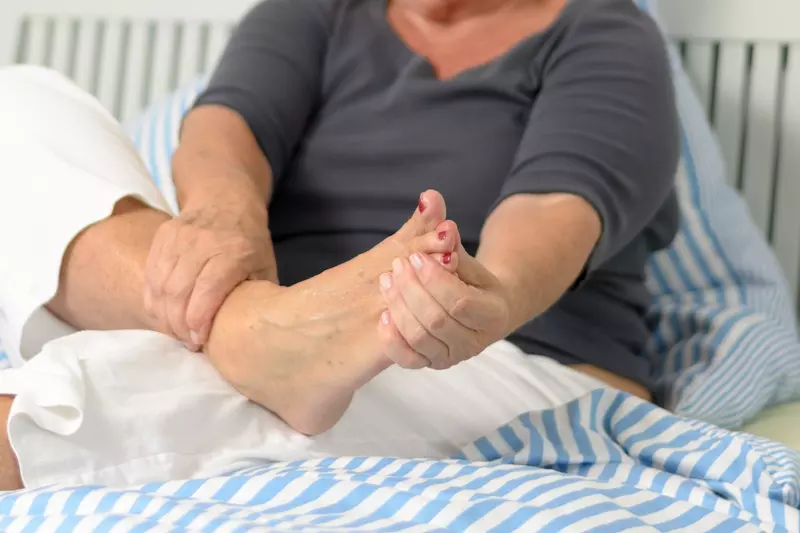- AdventHealth

There’s a lot involved in managing diabetes: Planning meals, exercising, taking medicine and more, but it’s always worth making time in your busy schedule to take care of your feet and legs. Just a few minutes a day can help prevent serious complications.
Why Good Foot Care Matters
About 60–70% of people with diabetes will develop nerve damage over time, with nerves of the feet and legs affected the most often.
Eventually, nerve damage may lessen your ability to feel pain in your feet, so you may not notice if you get a cut or blister there. To make matters worse, diabetes may also impair blood flow to your feet and legs, which makes it harder for these wounds to heal. If infection sets in, it can be serious. In the most severe cases, a toe, foot or part of a leg may need to be amputated.
Fortunately, you can greatly reduce your risk for complications by catching foot problems early and getting them treated promptly. Check your feet daily for cuts, blisters, sores, redness, swelling, warm spots, ingrown toenails and other changes in your skin or nails.
Contact your health care provider about cuts and blisters that haven’t started healing within a few days or other changes in your feet. By acting quickly, you can usually keep little problems from turning into big ones.
Put Your Best Foot Forward
By adopting healthy habits, you can prevent many foot and leg problems from starting in the first place. Take these steps:
- Manage Blood Glucose Levels. Work with your provider to develop a care plan that keeps your blood glucose within your target range as much as possible.
- Wash Feet Daily With Soap and Warm (Not Hot) Water. Dry them well afterward, then apply lotion to the tops and bottoms of your feet (but not between your toes).
- Trim Your Toenails Straight Across, Not Rounded at the Corners. Gently smooth out sharp edges with an emery board.
- Avoid Going Barefoot. Wear comfortable, well-fitting shoes and lightly padded socks.
- Promote Blood Flow to Lower Limbs. Prop up your feet when sitting. Several times a day, wiggle your toes and move your ankles around.
Also, don’t forget to schedule a complete foot exam once a year (or more often, if recommended). Taking good care of your feet and legs is a great way to stand up to diabetes. To learn more about how AdventHealth can provide you compassionate and thorough diabetes care, click here.


